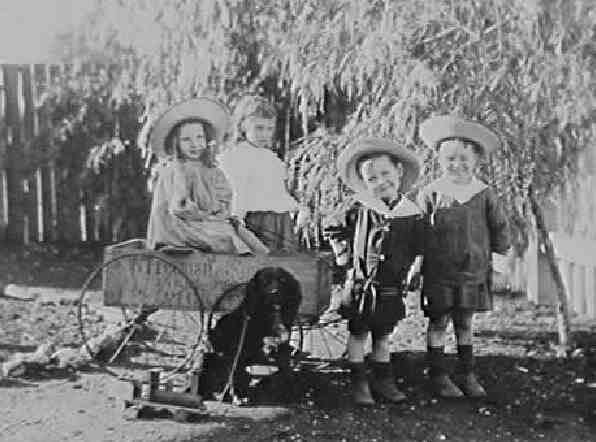
Figure 1.--These Australian children are playing with a billycart. I doubt if they had much sucess getting the dog to pull it. This particuar conveyence might be more accurately called a waggon as it has four weels. |

|
The cart was very popular in the 19th century. We were entirely sure what the difference was between a cart and a waggon. Apparently a cart is a two wheel vehicle and a waggon has four wheels. Also a waggon was mostly pulled by the children themselves and was more for pulling items than people. Propulsion varied. Richer children might have a pony cart. Afluent childrn might have a goat or dog cart. Because they were commonly pulled by goat, they were often called billycarts. They were quite popular and as goats never pulled them at any speed, were quite safe even for younger children. The childrn involved almost by definition were well to do, or lived in rural areas. Children with pony carts might live on estates.
The cart was very popular in the 19th century. We note them in the 19th and early 20th centuries, but we see them less commonly after World War I. I'm not precisely sure why they declined in popularity, but believe urbanization and the increasing popularity of bicycles and tricycles were factors. We see these carts in many different countries. We are unsure at this time as to significant coyntry differences.
We were entirely sure what the difference was between a cart and a waggon. Apparently a cart is a two wheel vehicle and a waggon has four wheels. Also a waggon was mostly pulled by the children themselves and was more for pulling items than people. These carts were very common in the 19th and early 20th centuries, but we see them less commonly after World War I. I'm not precisely sure why they declined in popularity, but believe urbanization and the increasing popularity of bicycles and tricycles were factors.
Propulsion varied. Richer chilren might have a pony cart. Afluent childrn might have a goat or dog cart. Because they were commonly pulled by goat, they were often called billycarts. We have noted these carts in America, Britain, and Germany, but suspect they were also found in other countries as well. They were quite popular and as goats never pulled them at any speed, were quite safe even for younger children. The pony carts required a little more supervision. The childrn who had pony carts almost by definition were well to do, or lived in rural areas. Children with pony carts might live on estates.
We see these carts in many different countries. We notice children having fun with these carts in many different countries, including America, England, France, Italy, and Germany. We are unsure at this time as to significant country differences. It is difficult looking at many images to determine the country. The Australian image here (figure 1), could be just as easily America or Britain. Carts were most common in the 19th century when the photographic record was mostly studio photography. Most of the images vome from the late-19th century. and early-20th century when photographu emergedfrom the studio and are rimarily American because the american photographic record is so large. By the time that the snapshot appeared, webegin to see moreand more waggons rather than carts and again many of our images are American.
Navigate the Boys' Historical Clothing Web Site:
[Return to the Main outdoor activities vehicle page]
[Introduction]
[Activities]
[Bibliographies]
[Biographies]
[Chronology]
[Clothing styles]
[Countries]
[Literary]
[Contributions]
[FAQs]
[Glossaries]
[Boys' Clothing Home]
Navigate the Boys' Historical Clothing Web Site:
[Sailor hats]
[Sailor suits]
[Buster Brown suits]
[Eton suits]
[Rompers]
[Tunics]
[Smocks]
[Pinafores]
